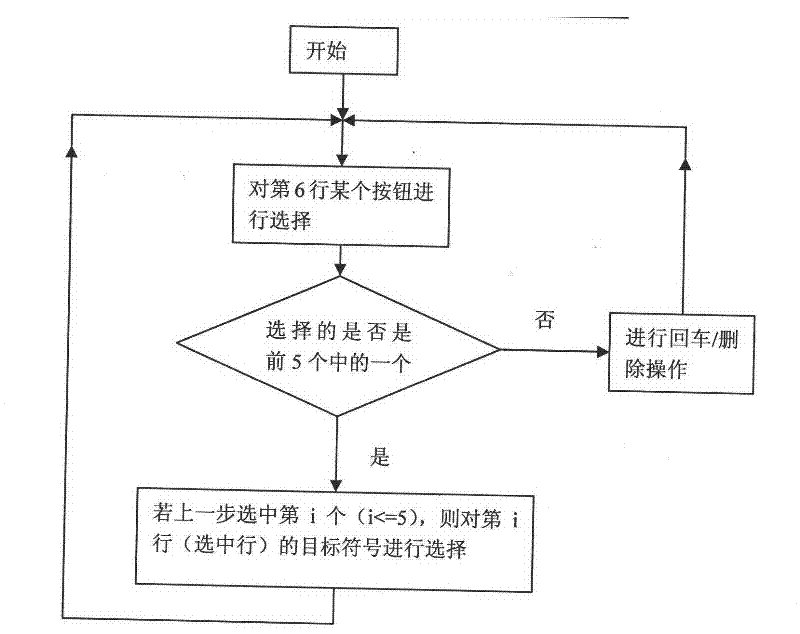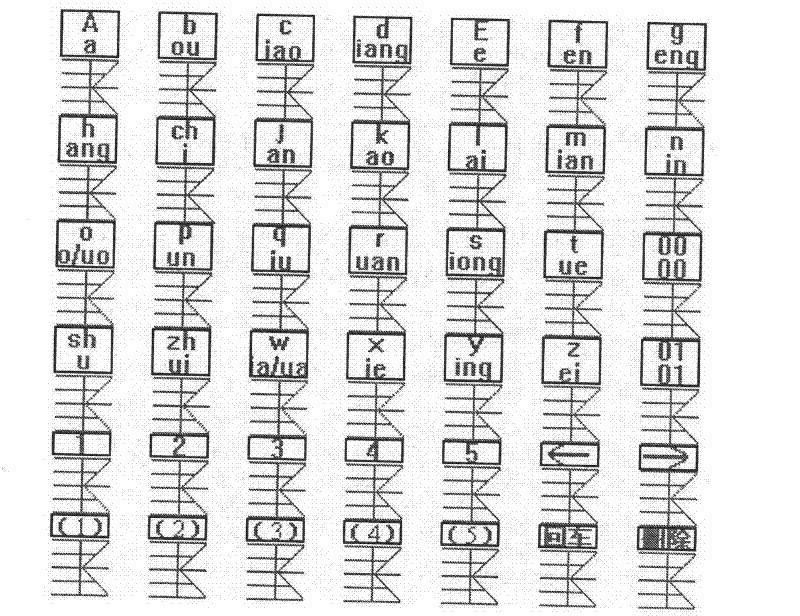Virtual keyboard design scheme for inputting Chinese characters by brain waves
A technology of virtual keyboard and design scheme, applied in the input/output of user/computer interaction, electrical digital data processing, input/output process of data processing, etc., to improve the accuracy rate, increase the input speed, and reduce the probability of errors. Effect
- Summary
- Abstract
- Description
- Claims
- Application Information
AI Technical Summary
Problems solved by technology
Method used
Image
Examples
Embodiment
[0019] image 3 In the shown embodiment, the user wishes to input a word "白" on the computer screen through this interface, the pinyin is "bai", the corresponding initial consonant "b" is in the second key grain of the first row, and the final consonant "ai ” at the 5th keygrain in row 2. For the input of the initial consonant "b", two steps of selection are required to complete. The first step is to select the "(1)" button on line 6, such as image 3 As shown, when selected, the virtual keyboard will look like Figure 4 shown. The second step is to select the "b" button in the first row selected, thus completing the input of the initial "b", and the matching input method will be as follows Image 6 shown. For the input of the final "ai", take the same method as the input of the initial "b". When both the initial "b" and the final "ai" are entered, the input method will be as follows Figure 7 shown. The Chinese character "白" is located in the first position of the cand...
PUM
 Login to View More
Login to View More Abstract
Description
Claims
Application Information
 Login to View More
Login to View More - R&D
- Intellectual Property
- Life Sciences
- Materials
- Tech Scout
- Unparalleled Data Quality
- Higher Quality Content
- 60% Fewer Hallucinations
Browse by: Latest US Patents, China's latest patents, Technical Efficacy Thesaurus, Application Domain, Technology Topic, Popular Technical Reports.
© 2025 PatSnap. All rights reserved.Legal|Privacy policy|Modern Slavery Act Transparency Statement|Sitemap|About US| Contact US: help@patsnap.com



